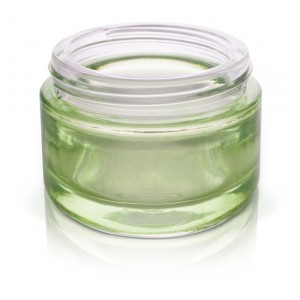Types of glass and how they’re used
“Glass” is a pretty broad term, but there are dozens of different kinds of glass. How glass is made and what it’s made of determine how the glass looks and what it can do. In this post, we’ll take a look at some of the most common types of glass and what makes them stand out.
Most common types of glass are flat, container
Flat glass. One of the most common types of glass is “flat glass.” This kind of glass may also be called “sheet glass” or “plate glass.” Flat glass is the kind of glass you use in windows. You can also use it in doors and cars, interior walls – really anyplace you need a sheet of glass. Flat glass comes in a variety of thicknesses and can include many materials.
The term “flat” is a little misleading because flat glass isn’t always flat! Flat glass can be shaped or bent after it’s initially produced. This allows “flat” glass to be custom shaped for applications like windshields. Flat glass is the most common kind of glass produced today. It uses the basic glass formula – soda, lime and silica. It’s inexpensive to make, infinitely recyclable, chemically stable and relatively hard, but is soft enough to be scratched by steel. Soda-lime glass is liquid at a temperature of about 1,400-1,600° C. Most glass is recycled; the melting temperature of recycled glass is actually lower than that of newly formed glass.
Today, flat glass is mass-produced by spreading (or floating) flowing molten soda-lime-silica mixture over a molten metal (usually tin) bed. The molten glass “floats” on top of the molten metal bed. The glass can be made thicker or thinner by varying the speed of the rollers that move the molten glass along in the production process. The molten glass flattens uniformly under its own weight, and is slowly cooled (annealed) in the final stages of the manufacturing process. The resulting glass does not need to be polished or ground. It can be cut into smaller sheets, and used in a wide variety of applications.
Container glass. Container glass is a “close cousin” of flat glass. It uses the same basic formula of soda-lime-silica, but it differs slightly in composition. Container glass has higher concentrations of silica, calcium oxide and aluminum oxide, and lower concentrations of magnesium oxide and sodium oxide. This minor variation in formula gives container glass a slight edge over flat glass in chemical durability. These minor differences make container glass a better choice for storing foods and liquids.
Container glass starts out as a molten mixture, just like flat glass does, but instead of floating, container glass is created by blowing or pressing the molten glass, to achieve the desired shape. Container glass is usually much thicker than flat glass and slightly more durable, although not significantly so.
Glassprimer™ glass paint is designed to work with all types of glass. Most commonly, flat glass is used for decorative applications. Flat glass is used to create decorative backsplashes, glass doors, glass walls and glass windows. The minor differences in glass formulation will not change the performance of Glassprimer™ glass paint when it is used on either flat glass or container glass. Beyond flat glass and container glass, there are a number of different types of glass, which we’ll look at in subsequent posts.
For more information about Glassprimer™ glass paint, please check out the rest of our site. If you’d like to purchase Glassprimer™ glass paint, please visit our online store .

